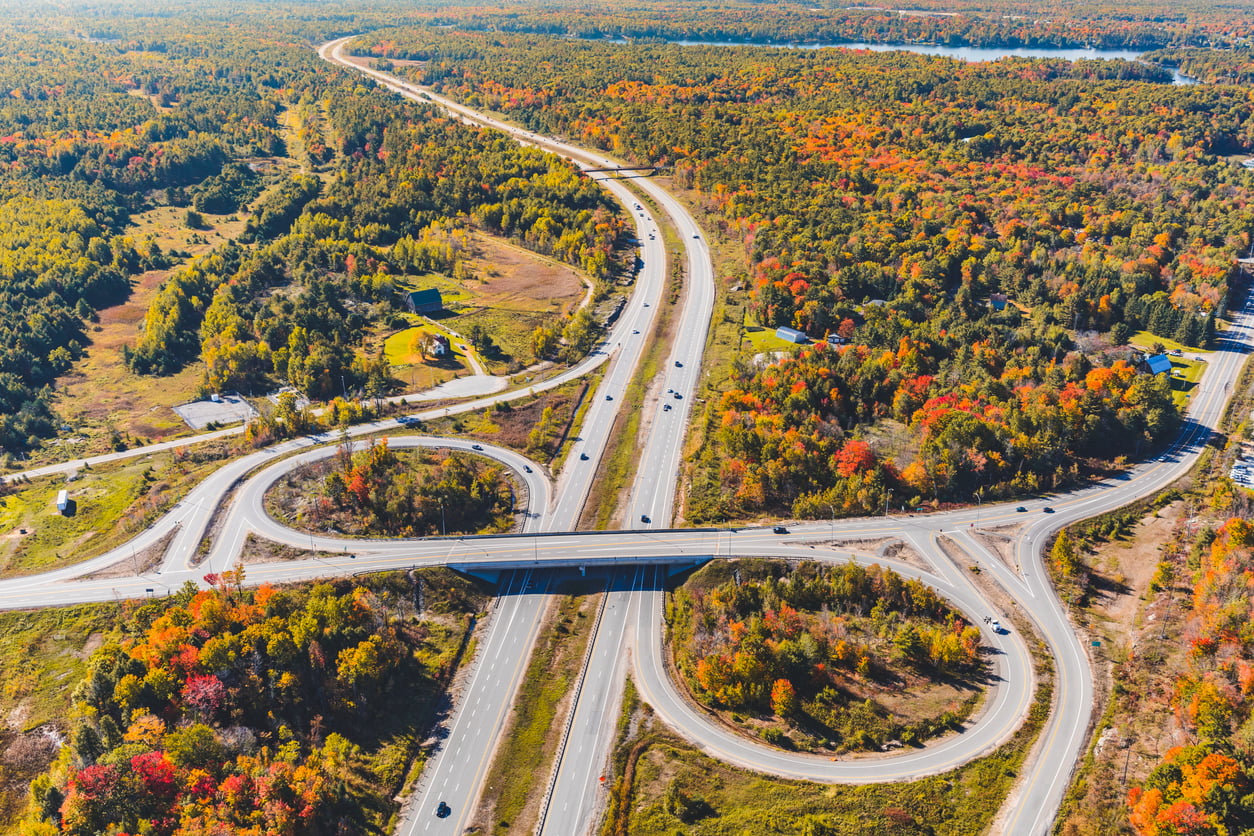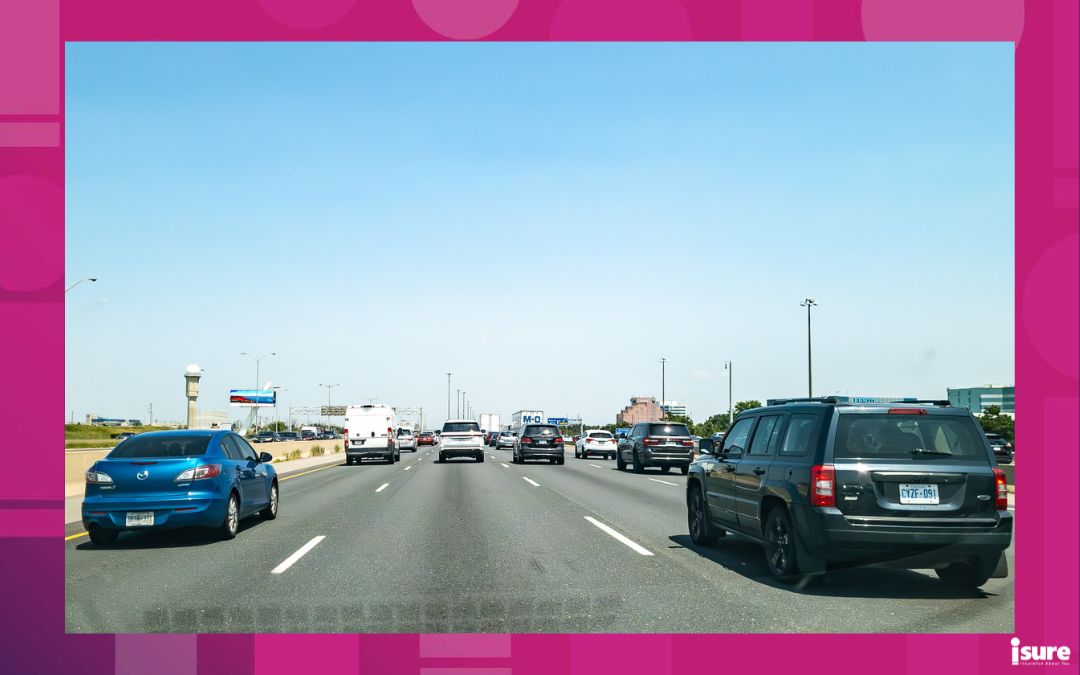On April 24th, the Ontario government announced that 110 km/hr speed limits are coming to different sections of provincial highways. This includes Highway 401 and Highway 403. With the news of the speed limit changes being made permanent on July 12th, 2024, and the remainder happening “before the end of the year,” many are wondering about the pros and cons. Will this change be a step in the right direction? Will it make our roads less safe? Does this make much of a difference for the average Ontario driver? We’ve got what you need to know below.
New 110 km/hr speed limits arriving this summer
The announcement last Wednesday confirms that 10 additional sections of the provincial highways will see an increase in speed limit. This includes highways in both the southern and northern parts of Ontario – 36% and 860 kilometres of Ontario’s highway network, to be exact. Though none of these are specifically in the Greater Toronto Area, some sections, including Highway 403 from Brantford to Hamilton and from Woodstock to Brantford, will be getting an increase.
Ontario’s Minister of Transportation, Prabmeet Sarkaria, says that as of July 12th, the speed will increase from 100 km/h to 110 km/h on 10 additional sections of provincial highways. “Much of Ontario’s highway network was originally designed to safely accommodate speed limits of 110 km/h, and data from our changes in 2022 show they do just that.,” Sarkaria said in a statement on Wednesday.
This is about the 30-year plan for public transit and highway expansions across the GTA and Golden Horseshoe. The expected cost is $82 billion throughout the next decade. In April 2022, six stretches of provincial highways increased to 110 km/h. “These evidence-based increases are a common-sense change to make life more convenient for Ontario drivers while bringing our highway speed limits in line with other Canadian provinces,” adds Sakaria.
Which highways are seeing an increase in speed limit?
- Highway 401, Tilbury, extending the existing 110 km/h zone further east by 7 km.
- Highway 401 from Highway 35/115 to Cobourg (approximately 35 km)
- Highway 401 from Colborne to Belleville (approximately 44 km)
- Highway 401 from Belleville to Kingston (approximately 66 km)
- Highway 401 from Highway 16 to Quebec boundary (approximately 107 km)
- Highway 403 from Woodstock to Brantford (approximately 26 km)
- Highway 403 from Brantford to Hamilton (approximately 14.5 km)
- Highway 406 from Thorold to Welland (approximately 13 km)
- Highway 416 from Highway 401 to Ottawa (approximately 70 km)
- Highway 69 from Sudbury to French River (approximately 60 km)
According to the province, all highway sections are based on their ability to safely accommodate higher speed limits.
Is the highway speed limit increase in Ontario a step in the right direction?
Advocates of higher speed limits believe these moves continue to be a step in the right direction. The argument is that a highway speed limit that is too low can make the roads more dangerous. The government says the six sections of highway that have already seen 110 kilometre per hour speed limits have comparable speeds and collision trends to similar highway sections, with limits of 100 kilometres/hour.
“What many people don’t realize is that until 1975, Highways 400, 401, 417 and the QEW had speed limits over 110 kilometres until they were reduced in response to the energy crisis,” Sarkaria told reporters.
Is the highway speed limit increase not enough?
Critics argue that having too low of a speed limit creates more variation in speeds among drivers. Most drivers will have to change lanes more often to avoid drivers who adhere to the 100 km/h maximum. Some argue that speed limits should be set at the 85th percentile speed, which is the speed at which 85% cruise at or below. Highway speed limits globally tend to be much higher than in Canada. Alberta, Manitoba, New Brunswick, Nova Scotia and Saskatchewan already have a maximum speed limit of 110 km/hr, while in British Columbia, the maximum speed limit is 120 km/hr!
Most U.S. states have set their highway speed limits at around 112-120 km/hr. One highway in Texas has a speed limit of 137 km/hr! Furthermore, many Europe expressways have speed limits of around 120-130 km/hr. However, much of the German autobahn has no speed limit. When the 2022 speed increases were implemented, there was a fair number of critics. Most notable was the founder of Stop100.ca, Chris Klimek. He stated the move is what Ontario should’ve done “at the very least”. He says he’s disappointed that only some highways are getting speed limit increases. Provincial highways around Toronto are being taken from the equation. Minister Mulroney criticizes this project, “We will certainly explore extending it to other sections of highways across the province.”
Is the highway speed limit increase too much?
In addition, other studies suggest that higher speed limits can result in more injuries and collisions. Back in 2014, B.C. raised the speed limit up to 120 km/h on several highways. In 2018, the University of British Columbia published a study that found fatal crashes doubled on roads with higher speed limits. Moreover, the roads with higher speed limits also saw a 43% increase in auto insurance claims. Additionally, there was a 30% increase in claims for injuries from crashes. After the study was published, the B.C. government lowered speed limits on some of the affected highways.
The Ontario Provincial Police (OPP) revealed that in 2023, 404 people lost their lives as a result of motor vehicle collisions. 50 of those deaths were related to alcohol/drug-related collisions. Six months into 2023, the OPP said there were already 136 fatal collisions on roads with 150 people dead, resulting in a ten-year high!
Moving forward with higher speed limits
With July around the corner, it is important to remember to drive safely to avoid injury or death to yourself or others. Even with these changes, it’s important to remember the effects of speeding on your insurance premiums. Think of demerit points and the risk of being labelled a high-risk driver. As a result, this may prevent you from being able to find adequate insurance coverage at all. Contact us or request a car insurance quote today!




